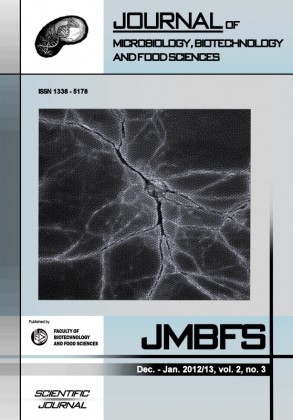SYNERGISTIC ANTIBACTERIAL EFFECTS OF THEAFLAVIN IN COMBINATION WITH AMPICILLIN AGAINST HOSPITAL ISOLATES OF STENOTROPHOMONAS MALTOPHILIA
Keywords:
antibacterial, theaflavin, polyphenol, synergy, checkerboard, Stenotrophomonas maltophiliaAbstract
Stenotrophomonas maltophilia is an important opportunistic nosocomial pathogen that shows intrinsic resistance to many antibiotics. This often limits treatment options and can cause lengthy hospital stays. Combination treatments are often used to combat resistance and using natural compounds such as polyphenols could give increased treatment options and even the reuse of antibiotics to which high levels of resistance have been observed. A checkerboard assay was used to determine if any synergy exists between ampicillin and the polyphenol theaflavin against 9 clinical isolates and one control isolate (NCTC 13014) of S. maltophilia. It was discovered that significant synergy (P  0.05) does exist between theaflavin and ampicillin, reducing the mean MIC of ampicillin from 12.5-22.9 µg/mL, in liquid culture, to 3.125-6.25 µg/mL. The FIC index was calculated to be 0.22-0.35 confirming synergy. From these results, significant potential for medical applications can be seen and further investigation is recommended.Downloads
Download data is not yet available.
Downloads
Published
2012-12-03
How to Cite
W. Betts, J., Murphy, C., & M. Kelly and J. Haswell, S. (2012). SYNERGISTIC ANTIBACTERIAL EFFECTS OF THEAFLAVIN IN COMBINATION WITH AMPICILLIN AGAINST HOSPITAL ISOLATES OF STENOTROPHOMONAS MALTOPHILIA. Journal of Microbiology, Biotechnology and Food Sciences, 2(3), 1068–1078. Retrieved from https://office2.jmbfs.org/index.php/JMBFS/article/view/7148
Issue
Section
Microbiology
License
Copyright (c) 2012 Jonathan W. Betts, Christine Murphy, Stephen M. Kelly and J. Haswell

This work is licensed under a Creative Commons Attribution 4.0 International License.
All papers published in the Journal of Microbiology, Biotechnology and Food Sciences are published under a CC-BY licence (CC-BY 4.0). Published materials can be shared (copy and redistribute the material in any medium or format) and adapted (remix, transform, and build upon the material for any purpose, even commercially) with specifying the author(s).

